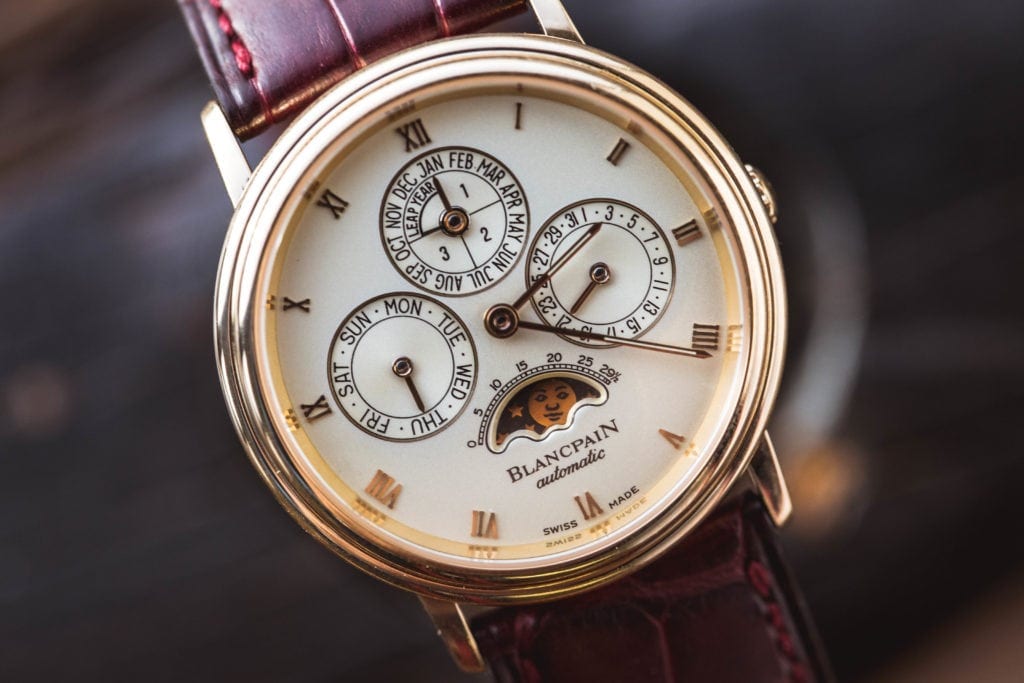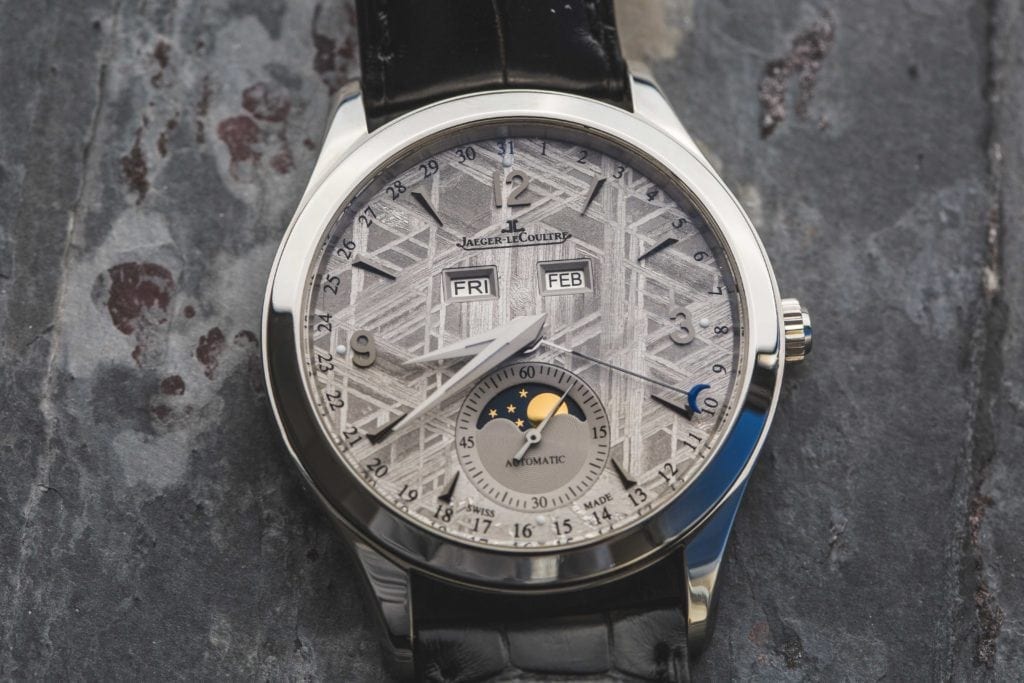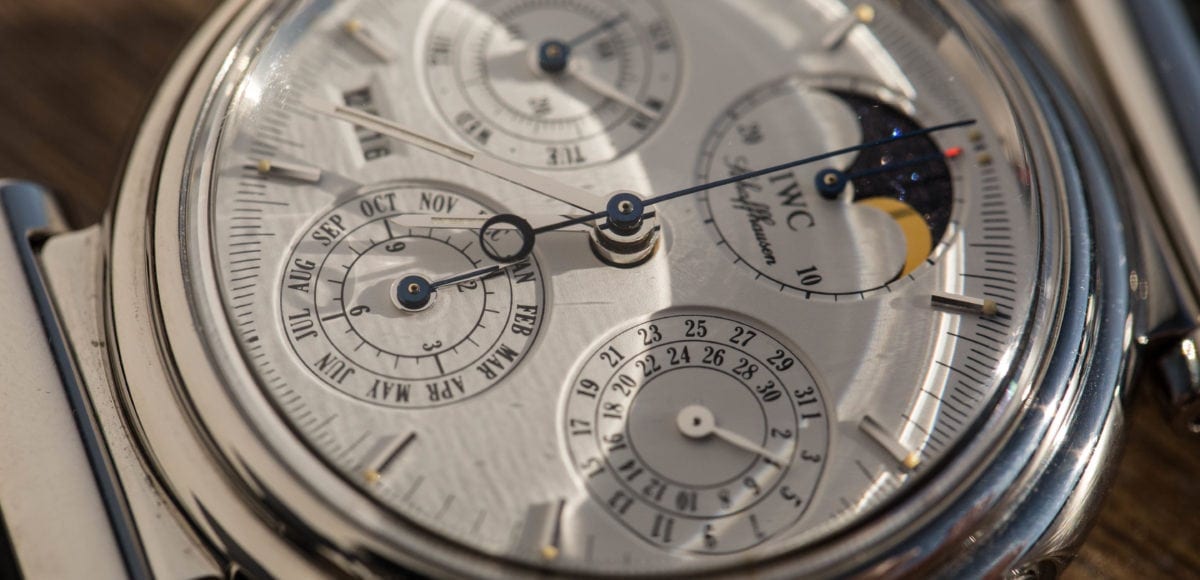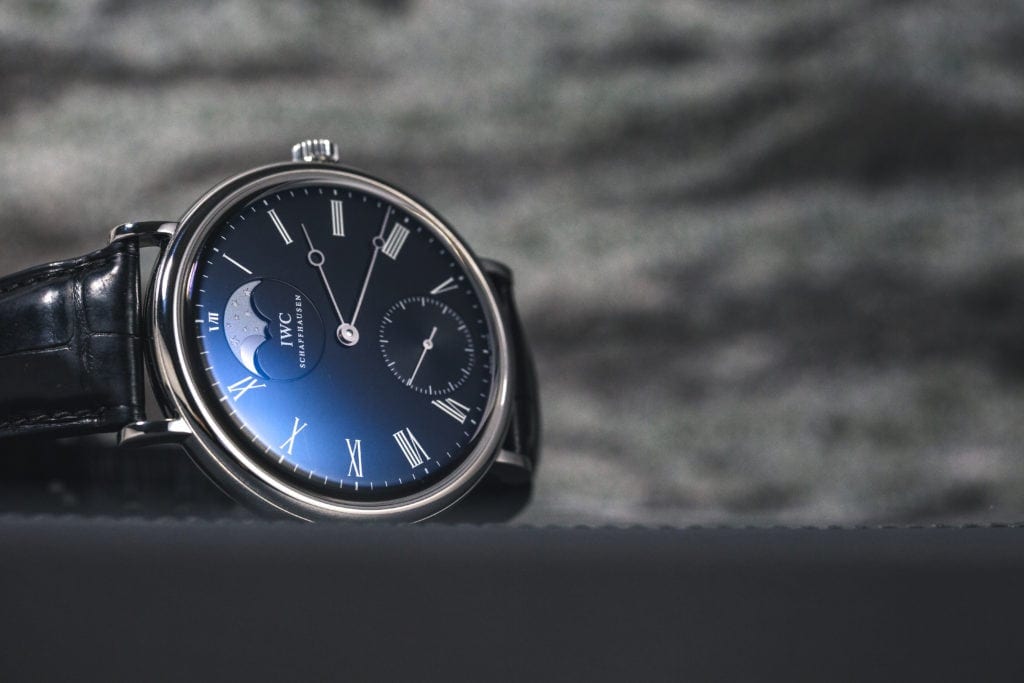History of the Moonphase Complication
Before the calendar as we know it today, we used different methods to measure time. People measured days by the rising and setting of the sun and years by the changing of seasons. In addition, they used phases of the moon to measure months.
You’ve likely heard of the moonphase complication in the world of watches. However, you may still be wondering, what is a moonphase watch? As the name suggests, the moonphase complication displays the phase of the moon as it changes from full to new and back again over the course of about 30 days or one month. The contemporary variation of the moonphase complication is one of the most visually pleasing and highly sought after in watchmaking.
No complication is quite as romantic, elegant, and poetic as the moonphase complication. The moonphase history also makes it one of the oldest watch complications, with origins dating back to Ancient Greece. The functionality of the moonphase complication has remained rather simplistic for hundreds of years. Instead, it has become an eye-catching stylistic element, with depictions of the moon evolving with changes in tastes and trends.
Today, watchmakers have struck a balance between utility and design with the moonphase complication. Certain modern watchmakers are continually striving to create more and more accurate versions of the moonphase complication. Some even promise over 1000 years of accuracy. Other brands have honed their efforts on the use of innovative materials and techniques to make the moonphase complication itself appear increasingly lifelike. It’s pretty amazing how diverse the options can be when it comes to the moonphase complication. All in all, the moonphase complication is a beautiful addition to watches & pays homage to how we first told time. We take a deeper look at the moonphase complication and the moonphase history.
The Earliest Moonphase Complications
The moonphase history begins in Ancient Greece. The earliest found example of the mechanical moonphase is in the Antikythera, an Ancient Greek mechanism. It’s believed people developed the device to help predict astronomical events. These include the changing phases of the moon and even eclipses. The complexity of the Antikythera remained unmatched for nearly 2000 years, until the invention of astronomical clocks. The concept of the moonphase complication didn’t see integration into the functionality of other clocks and watches until much later.
The moonphase history continues with the integration of the moonphase complication into clocks. The first evidence of the moonphase complication incorporated into modern clocks was in astronomical clocks built into churches and cathedrals during the Renaissance. These clocks depicted the belief that Earth was at the center of the universe. In turn, the sun, moon, and planets orbited around it. As scientists discovered that Earth was not the center of the universe, the appearance of these clocks dwindled. However, the moonphase complication persisted through the 1500s.
The sixteenth century brought about the use of the moonphase complication in standalone clocks. The complex grandfather clocks built in Germany and England often featured a moonphase complication. Soon after, the moonphase complication was constructed on a smaller scale to be incorporated into pocket watches. By the twentieth century, the moonphase history expanded further when the first moonphase complication appeared in wristwatches. At this point, the moonphase complication was no longer a necessary means to keep time. However, its allure illustrates our innate fascination with the cosmos. More importantly, its functionality became a key part of the development of the perpetual calendar complication.

The Evolving Depiction of the Moonphase Complication
Another interesting piece of the history of the moonphase history is the ever-changing depiction of the moon. Just as the design of clocks and watches shifts with trends, the representation of the moon changed with the styles of the period. The early moonphase complication of the sixteenth and seventeenth century shows a moon who’s almost cherub-like. In the eighteenth and nineteenth century, he evolved into a more mature “man in the moon.” In the early twentieth century, the moon gets an Art Deco spin. Then by the mid-twentieth century, the moon had adopted a distinctly minimalist design. In more recent years, moon representations are more realistic. Watchmakers use techniques like engraving to mimic the moon’s craters.

Popular Moonphase Complications Across Brands
Here, we’ve put together a few of our favorite models featuring the moonphase complication. The first is the IWC Big Pilot’s Watch Perpetual Calendar Edition Le Petite Prince. “The Little Prince” is one of the bestselling books of all time. In 2013, IWC created two special edition models to celebrate the children’s classic. Both models were pilot watches, honoring the author Antoine de Saint-Exupery who was an avid adventurer and pilot. The more complex of the two was the Big Pilot’s Watch Perpetual Calendar Edition Le Petite Prince. The foundation of the model is the Mark XVII. However, it gets some major upgrades. Three of the four subdials display the perpetual calendar complication. In addition, there’s a year register situated between the seven and eight-o’clock positions. The fourth subdial, prominently located at the twelve-o’clock position, showcases the moonphase complication. Here, we see the little prince himself standing on the lunar surface.
Next, we have Rolex’s first foray into the moonphase complication. The brand first introduced the moonphase complication into their classic Cellini collection just a few years ago in 2017. Here, we see that balance of style and substance. The moonphase disc features enameling techniques as well as the incorporation of meteorite. It showcases the night sky in a rich, deep blue. It also features the lunar cycle with both a new moon and full moon. In addition, the moonphase complication boasts accuracy for 122 years.
The same year Rolex released the Cellini Moonphase, Cartier added a moonphase complication to its iconic Drive de Cartier collection. The moonphase edition of the Drive maintains the integrity of the line. It features the unique cushion-shaped case that’s not quite tonneau yet not quite square or round. Here, the moonphase complication sits comfortably at the traditional six-o’clock position, keeping complete symmetry on the dial. Here, Cartier has opted for a more simplistic and traditional design. The Drive features a classic blue backdrop and gold moon and stars. However, this design choice is contrasted by the complication’s performance. It only requires adjustment every 125 years.
Then, there’s Baume & Mercier’s Clifton Moonphase. This model is a complete calendar watch offering the day, date, month, and a moonphase complication. It incorporates the same mid-century dress watch components as the other models in the brand’s popular Clifton collection. This gives it a distinctly retro, 1950s feel. However, the model ups the ante with these technical features. Unlike some other modern interpretations of the moonphase complication, Baume & Mercier keeps it rather simple and straightforward. Each of the complete calendar features, including the moonphase complication, must be manually rest each month. In addition, we see this one depicted as a simple white sphere in a black half-moon window.
It comes as no surprise Patek Philippe has a number of moonphase offerings in their catalog. They’re a brand known for their complications from the annual calendar to the moonphase. In contrast, their Calatrava collection is one of their most beloved for its sleek and minimalist design. While most models in the collection are time-only, the brand has upgraded some variations with its complications. One example is the ladies’ Calatrava. It features a striking grey dial with moonphase complication and small seconds subdial located in the center of the display. Here, the moonphase compliments the dial and blue cabochon crown with a deep navy backdrop and blue-grey moon and stars.
A more recent moonphase model is the Zenith Captain Moonphase. The brand unveiled the model at Baselworld in 2013. Like the Cellini, the model focuses on form and function when it comes to the design of the moonphase complication. First, you can’t help but notice the striking styling of the moonphase complication. It features a rather traditional cover plate with two lobes. However, Zenith has applied a unique guilloche decoration. Under the lobed cover, there’s a blue disc displaying the night sky. As the disc rotates, it reveals a waxing moon and eventually a full moon. This particular moonphase complication needs resetting every two to three years.
The Moonwatch itself wouldn’t be complete without a moonphase edition. OMEGA first introduced the moonphase complication to the Moonwatch in 2016 with the Speedmaster Moonphase Master Chronometer Chronograph. This also marked the first Speedmaster to receive the coveted METAS certification. In addition to the impressive technical features of this model, OMEGA pulled out all the stops on the design. The moonphase complication is incredibly detailed, down to a reproduction of Buzz Aldrin’s footprint on the lunar surface. To accomplish this amazing feat, they used a metallic crystal disc microstructured to obtain a high-resolution image of the moon.
Last but certainly not least is the Jaeger-LeCoultre Master Eight Days Perpetual. This model has a surprisingly minimalist appearance for such a complicated watch. It boasts a perpetual calendar, power reserve indicator, AM/PM indicator, and, of course, a moonphase complication. Jaeger-LeCoultre took care to arrange each of these complications thoughtfully on the dial. The result is uncluttered, crisp, and easy to read. The moonphase complication is contained within the day of the week subdial at the nine-o’clock position. Its design not only showcases the moon but also the earth and stars all on a blue backdrop.
The Moonphase Today
Today, the moonphase complication continues to be a focus of many prominent watchmakers. Each strives to create a more accurate variation of the mechanism and claim the title of the most accurate moonphase complication ever made. Most standard moonphase complications can become inaccurate and need adjustment after just a few years. However, brands like H. Moser & Cie, A. Lange & Sohne, and Patek Philippe are doing something different. Each has developed a moonphase complication that boasts over 1000 years of accuracy.
Other smaller, more specialized brands have gone even further. The Swiss brand Ochs und Junior created a moonphase complication that’s accurate up nearly 3500 years. Dutch watchmaker Christian Van Der Klaauw designed a moonphase complication that’s accurate for 11,000 years. More impressive yet, Swiss watchmaker Andreas Strehler developed a moonphase complication that’s accurate for over two million years. These feats of watchmaking skill are pretty astonishing and perfectly punctuate the rich and colorful moonphase history.
Get More Articles Like This in Your Inbox
We're constantly creating great content like this. So, why not get it delivered directly to your inbox? By subscribing you agree to our Privacy Policy but you can unsubscribe at any time.







